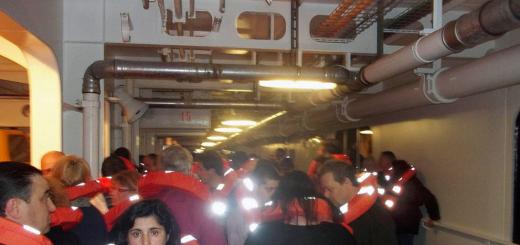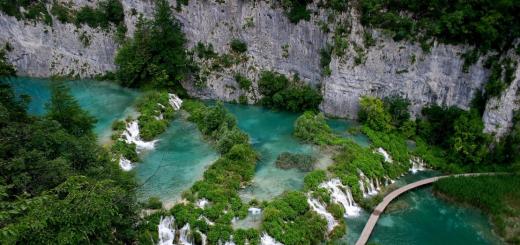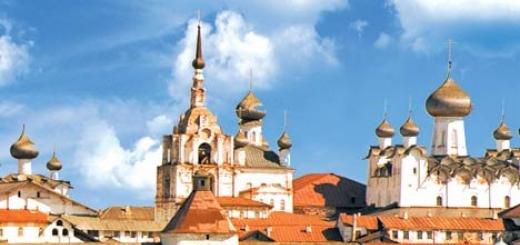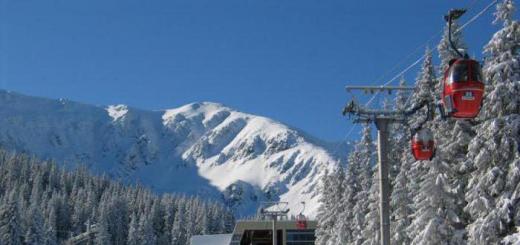Railways Portugal (Rede Ferroviaria Portuguesa, REFER) is represented by the main passenger rail carrier - (Comboios de Portugal,). The second company (Fertagus) operates the Lisbon-Setubal line.
It is not difficult to understand Portugal's passenger rail transport and train classifications.
1 - "Urban Lines"- these are urban and suburban (Urbano, Suburbano - U) modern electric trains of Lisbon (Urbanos de Lisboa) and Porto (Urbanos do Porto). From Lisbon, for example, they are good for getting to Sintra Line, Cascais Line, or to the center, to Rossio station. From the city of Porto, using such commuter trains, you can get to the city of Guimaraes. If you need to travel by train in Lisbon or in the city of Porto click on "Timetables in PDF Format" and download a map of Lisbon, Porto train lines and stops for your future reference on site.
2 - "AlfaPendularandIntercidades« - these are intercity expressways "Alfa Pendular" (AP), an analogue of Eurostars will help you quickly get from the capital to Faro, Coimbra, Porto, Braga, etc. (Faro, Loulé, Tunes, Albufeira, Entecampos, Lisboa Oriente, Santarém, Entroncamento , Pombal, Coimbra B, Aveiro, Espinho, Gaia, Porto Campanha, Braga) or back to Lisbon.
The usual intercity "Intercidades" (IC), with stops in the same and other important cities and their connection with Lisbon. Tickets on these trains are valid for a specific train, indicating the carriage number and seat. The difference in ticket price depends on the speed of the train, the class of service and the quality of service.
3 - “Regional(R), InterRegional(IR) servicesandCoimbraUrbantrains« Are regional trains and interregional trains running in the regions and following with all stops *. The ticket can be purchased both at the ticket office and from the train conductor. Valid for one day for one trip, without specifying the location. There is always a comfortable and clean toilet on the train. All train carriages are equipped with air conditioning, which makes the trip more comfortable. To open the doors, use the buttons or the door opening handle, close - automatically.
For those who wish to plan their route in Portugal, or to get from the south of the country to the northern region by train, these types of trains will be needed. You can see the directions of movement and stops made by trains on a schematic map by selecting "by clicking with the mouse in the menu" Train Times "/ Timetables in PDF Format" - one of the routes.
4 - "International« Are high-speed international trains (Lusitânia Comboio Hotel, Sud Expresso, Celta, InterRail). Such trains will be of interest primarily to those who decide to visit neighboring Spain, other European countries or get by train to Portugal itself. A schematic map of each route can also be viewed by clicking on this type of train.
Portugal Trains- it is not only a convenient and fast means of transportation around the country, but also enjoying a wonderful view from the window, especially in the northern region of the country. By the way, using the northernmost railway line in Portugal - the Linha do Minho line, you can conveniently "cross the border" with Spain and comfortably continue your journey to Santiago de Compostelo. Recommended! We also recommend taking a ride on regional line Douro (Linha do Douro) in a real historical train with a steam locomotive (Comboio Histórico) through the most picturesque corner of the country, Porto - Douro. It is a popular route along the famous wine-growing Douro River (Régua> Tua> Régua). All the details of this historical line can be found on the official website (Comboios de Portugal) or read in our special section. This excursion is in great demand among tourists, because has easy access to main rail transport and discounts.
scheduletrainsPortugal(Horários os comboios de Portugal)
Depending on your direction, or making your own route using the services of the Portuguese railway, you can always find out the train timetable using the navigator of the Portugal railway website.
You can be presented with a choice of results of urban, suburban, regional, intercity communication and high-speed communication on intercity lines.
Select in the column "Timetables and Prices" the stations of the places of departure and arrival, date, number of people and - "OK". Check out the route result on the next page; type of train "service", time of departure, arrival, pricex and additional information Detail. Keep in mind that if you do not receive a response from the station finder in your request, then enter the correct departure / arrival stations. For example, in the city of Lisbon, there are two different railway station; Lisbon Santa Apolónia and Lisbon Orient (Lisboa - Gare do Oriente). There are also two train stations in the city of Porto; Porto - Campanhã and Porto São Bento.
Print in advance or download to your mobile online timetables trains Portugal. This will help you plan your daily itinerary in Portugal more accurately on the spot. You may need to memorize a few words in Portuguese when using trains; Comboio - train, Origem - from where, Destino - where the train should go, Hora - its departure time. Braga, Aveiro, Guimarães, Coimbra.
Tickets and fares
If you are in Lisbon or Porto, then for travel on city and suburban trains (electric trains) you will use universal city cards public transport... Read about this in our special sections "Buy a train ticket in Lisbon" and "Ticket for passenger transport in the city of Porto".
For intercity traffic, study the timetable and ticket price in order to finally decide whether you need to travel by train, or it is better to use an alternative mode of transport on the chosen route - buses. If everything suits you, then the next step is to buy a ticket.
Tickets are bought at vending machines, ticket offices, directly at the train station or central station of the city, before departure, or better in advance. Ticket sellers are surprisingly intelligent people, speak excellent Portuguese, but poorly in English, while understanding all other languages of the world. You can also book a ticket through the "online" system. However, there are no discounts on the ticket for such a booking. There are also no problems with the lack of free seats. Consequently, with the exception of the month of August, there is no point in purchasing an electronic ticket option. Do not worry if suddenly there are no tickets at the time of the train departure, be sure to go next or consider, no less convenient and more economical, a backup option - by bus.
Discounts (up to 50%) in one direction are only for groups of 4 people. For example, the price of a ticket for 4 passengers traveling on the Lisbon - O Porto route will cost only € 15.50 per passenger. Lisbon - Faro and Lisbon - Coimbra - 11.50 euros. Discounts take place under special conditions: to buy a ticket in two directions on the same day - on Tuesdays, Wednesdays and Thursdays.
In the usual version, it makes no sense to buy a first-class ticket on Alfa Pendular and Intercidades, the services of which are practically no different from the second.
In regional traffic at provincial stations where there are no ticket offices, a ticket is purchased from the train controller-conductor (Regional. InterRegional). He will definitely come up to you and ask where and where.
On the Lisbon - Setúbal - Lisboa line operated by Fertagus, a ticket is purchased from the company's ticket offices (Bilheteiras Fertagus) located at the stations or from special blue vending machines (Fertagus). A green Viva Viagem card and a blue “Set Colinas” (7 Colinas) refueled by the Zapping system also give the right to travel to Fertagus.
Portugal Passenger Rail Card
Railways in Portugal, at that time one of the most backward countries in Europe, appeared rather late - in 1856. The first line connected Lisbon and its northeastern suburb of Carregada. By the end of the 1870s, the railway connected the two main cities - Lisbon and Porto, connecting most of the country's regions. By the end of the 1880s, railways covered most of the country and through Spain connected it with the rest of Europe - starting in 1887, the Southern Express began to run regularly from Paris to Lisbon via Porto. In general, railroad construction in Portugal was delayed by a couple of decades in comparison with the leading European countries and proceeded approximately simultaneously with Russia; almost all existing railway lines in small country were built by the end of the 1900s.
Even railway electrification in Portugal appeared in 1926, the same year as the USSR. Then a 40-kilometer suburban line was electrified, leading from Lisbon's Cais do Sodre station to the west, to the seaside resort of Cascais.
However, later in the national railway transport there was some stagnation. The electrification of long-distance trunk lines in the country began only after the Second World War, and only in 1966 was the country's main line between Lisbon and Porto fully electrified; up to the 1960s. steam traction prevailed on the railway.
In the following decades, the development of the national railway network was reduced to the gradual modernization of infrastructure and the gradual closure of narrow-gauge lines.
With the general decline of rail transport in Western Europe by the beginning of the 1990s. almost all long-distance international trains from Portugal were gradually canceled; the only international route was the Lisbon-Madrid train. At the same time, three railway crossings of the Portuguese-Spanish border continue to operate.
Towards the end of the 1990s. the implementation of large-scale infrastructure projects began, among which there were railway ones, such as the construction of a railway on the 25 April bridge to connect Lisbon with its southern suburbs. The reason for such a massive investment in infrastructure was world exhibition Expo 1998, held in Lisbon.
Since 1999, there are high-speed trains Alfa Pendular, running along the main transport corridor parallel to the coast (Faro - Lisbon - Entroncamento - Coimbra - Porto - Braga).
Now in Portugal there are almost 2,800 km of railways, of which 1,351 km (almost half) are electrified.
As you can see, the structure and density of the network approximately corresponds to the structure of settlement - most of the lines are within the largest agglomerations (Porto and Lisbon), and in general along the eastern coast:
The density of the railway network is about 30 km per 1000 sq. km., which is slightly below the European average and approximately corresponds to the indicator of the Moscow region (the highest in Russia).
My acquaintance with Portuguese railways began from the Porto Campania train station:

It is less central and representative than the São Bento station, but it is now the main one for the entire Porto metropolitan area - intercity trains, including high-speed ones, pass here.
But at this early hour he was deserted:

We traveled around the country exclusively by suburban trains (Urbano and Regional classes, there are also Interregional, Intercidades and the aforementioned Alfa Pendular), because with our Euro-rail pass, this did not require buying tickets.
Urbano train on the Porto Campagna-Aveiro route, following a section of the country's main double-track electrified line Porto-Lisbon (Lihna do Norte, or Northern Line):

Portugal generally pleasantly amazes with its developed and multi-stage system of local railway communication - Urbano trains serve densely populated suburban areas, Regional trains serve less populated periphery, while they are not more expensive and stop at every stop (analogue of our half-extinct distant electric trains). The frequency of commuter trains is higher than in France and not much less than in Germany, while at the same time they are closer to Russian prices (although they are still more expensive, of course).
A big surprise for us was that the Portuguese trains were never late for a day and a half of our use, unlike trains in almost all other Western European countries I visited (Italy, France, Great Britain).
Like many things in Portugal, the railways are elegantly and tastefully decorated:

This is a common stopover in the Porto suburban area.
And this is already a relatively large station of Aveiro in the resort town of the same name:



Also typical for Portugal - retro elegance is combined with modern European convenience:

In Aveiro, we took the Regional train, going to Coimbra station on the same main line from Porto to Lisbon.
This is closer to the electric train in our understanding, the cars are no longer as modern:

The occupancy of trains on the main line is average or high (the photo was taken on a weekend); passengers sometimes stand closer to large cities.
Arrived at the beautiful central station of ancient Coimbra:



From Coimbra, on another regional train, we made a short transfer to Alfarelos, an inconspicuous but junction station:

This station is a junction for the Northern and Western lines (linha do Oeste), the Alfareluz station itself is located on the Northern line, but a connection to the Western line with a length of several kilometers departs from it.

The station building is the ugliest I've seen in Portugal:

At very many stations in Portugal, elements of the locomotive infrastructure remained:

And at many stations, as elsewhere in Western Europe, traces of a reduction in rail freight traffic are visible:


In Alfarelos we deviated from the main route of the Northern Line (linha do Norte), and headed towards Lisbon on a shorter, but slower and more scenic route.
The fact is that the coastal lihna do Oeste - single-track, non-electrified - is shorter than the section of the Northern Line passing to the east. Only regional trains run along it, or rather diesel trains, or rather Motris:

There are already fewer people:

Motrisa drives at high speed, sways a lot, smells like old ikarus diesel.


The line is winding, the terrain is hilly and sparsely populated by European standards.
Provincial stations:

A couple of hours later, we arrived in the middle-sized city of Caldas da Rainha, located closer to Lisbon than to Porto.


This is the most typical Portuguese station.


Typical yet elegant concrete water tower:




But only for one stretch.


Having passed it, we arrived at a stop at the foot of the picturesque Obidush fortress.



In the evening we plunged onto another railcar

And an hour and a half later we reached the Mira-Sintra station near the city of Sintra, already in the Lisbon metropolitan area.

Here the western line connects to the Lisbon-Sintra double-track electrified line (linha de Sintra) with heavy urban commuter trains of the Urbano class. The Lisbon suburban area, like Lisbon itself, differs from the rest of the country in its greater neglect and criminality - trash and aggressive companies of Negro youth come across on the trains, azulejo tiles are almost never found at ordinary stations.
In Lisbon, the Sintra line joins the railway half-ring, which runs north of the center, there are several large stations with metro connections (Entrecampos, Areiro). But they are not the final destination for most trains, the trains go to the magnificent Oriente train station:

This station was built for the 1998 Expo in Lisbon and is located near the airport on the north-eastern outskirts of the city.

It is located on the main national lihna do Norte, not far from the city's railroad semicircle.

Oriente Station is the junction for Lisbon and the largest in the country: here the routes of most trains of the Lisbon metropolitan area (Urbano and Regional) intersect and the main long-distance routes, tied mainly to the Northern Line.

The next day we were in Lisbon and in the suburbs, and could not pass some of the railway facilities of the Portuguese capital.
Santa Apollonia Station is historically the main Lisbon railway station, one of the terminus of the Northern Line:
Despite the fact that the station building is new, it is the oldest station in the country: the Cais do Sodre - Cascais line was the first to be built in Portugal.
The line connects with each other not only Lisbon with seaside resorts to the west, but also to the western area of the city of Belém, where the most valuable historical sights of the Portuguese capital are concentrated.
It was also a day off, the queues were huge, we were once again saved by our rail passes:


We drove along the oldest Portuguese railway for about ten kilometers to the suburb of Oeiroz.
Around this point, the huge estuary of the Douro River merges into the Atlantic Ocean.

Something like that, thanks for your attention.
Portuguese railways trace their history back to 1844, when the country's first railroad track was laid. But it was only in 2008 that they began to comply with international requirements after being awarded the ISO 9001 certificate. The name was changed to Comboios de Portugal (CP), which translates as "Trains of Portugal". All assets of the enterprise are 100% owned by the state.
During a train ride, every traveler has the opportunity to experience all the beauty of the nature of this country, just by looking out the window, since the railway is laid through the most picturesque places. Often, the Portuguese themselves use trains just to enjoy the views of their country.
CP high-speed train
Ticket purchase methods
Portuguese Railways official website https://www.cp.pt/passageiros/en, is presented in two languages - Portugues and English for the convenience of foreigners and informs visitors about train schedules, ticket prices, discounts, and also provides many convenient functions ... The site does not exist in Russian, however, for complete information about railways in Portugal, you can use the website page https://discoverportugal.ru/transport-portugalii/zheleznye-dorogi-portugalii.
Train tickets can be booked and purchased in the following ways:
- By calling the hotline +351 707 210 220, around the clock.
- Via the mobile app CP App, following the instructions. Before starting the purchase procedure, the passenger must register in the application.
- With the help of the Internet portal, online sales are opened under the link https://www.cp.pt/passageiros/en/buy-tickets.
- If it is impossible to purchase a ticket online, sales offices are open throughout the country, a list of 296 addresses of which can be viewed here https://www.cp.pt/passageiros/en/train-times/Stations.
- There are vending machines at every train station in every city in Portugal that allow you to buy your own ticket with a credit card.
- If the passenger was not able to buy a ticket in advance, he can do it in the train carriage with the conductor, paying a commission.
On a note. Each of the listed purchase methods is available at uniform rates valid throughout the country.

Ticket sales office
Types of railway communication in Portugal
Portugal has a developed railway connection both between its cities and with neighboring Spain. Passengers are offered the following types of messages:
- Commuter passenger trains with a range of up to 100 km, depart from Lisbon, Faro, Porto and some others major cities... Trains are not high-speed, according to the timetable, these types of transportation are regular and trains leave on average every 15-30 minutes. Suburban destinations traditionally referred to as Intercidades, or Inter City
- Trains long distance, Alfa Pendular- designed to cover long distances across the country, as well as for international traffic. So, the most popular route for travelers - Lisbon - Madrid, is carried out on a modern train moving at a speed of over 220 km / h and covering a distance of 600 km in less than 4 hours, which is 1.5 times faster than traveling by road.
Train types
Comboios Portuguese uses different trains for different routes. If a commuter trains have only seating, then long-distance coaches can be equipped with both soft "airplane" seats and individual compartments with the possibility of organizing a berth in the first class, which affects the ticket price.
On each train, passengers are provided with a restaurant car, a mobile cafe, fresh newspapers, bathrooms, a smoking room, Wi Fi for an additional fee and other services, which can be found in more detail on the pages of the official website of the Portuguese railways at https: / /www.cp.pt/passageiros/en/passenger-information/Useful-information.

Commuter Train Interior
Map of the main routes Comboios Portuguesa
The train traffic scheme covers the whole country from north to south and from Atlantic Ocean to the border with Spain, with final stops not only in large cities, but also in sparsely populated areas.
Note! International communications are carried out only to Spain (2 directions) and France (1 direction, Lisbon - Paris).
The location of Portugal on the very edge of the European continent does not give it the opportunity to develop railway communication, at the same level as other European countries, but the quality of service that is now available along with the range of services and the length of the tracks is quite consistent with the global level.
Overview of Portuguese railways, how and where to buy tickets, prices and discounts.
History
1844 - The beginning of the creation of the railway network in Portugal.
In December 2008, Portugal's railways became fully compliant with international quality standards and Caminhos de Ferro Portugueses received ISO 9001 NP certification. CP is the first in Europe, from railway companies national scale, received this quality certificate.
Since June 2009 (Decree n.º 137-A / 2009, dated 12 June), CP becomes a public company, 100% of the shares of which are owned by the state, and the name of the company, with Caminhos de Ferro Portugueses(Portuguese Railways) changes to "Comboios de Portugal"(Portugal trains). Interestingly, when changing the name, logo and abbreviation CP- remained the same.
In addition to speed and comfort, the Portuguese railways offer travelers to enjoy wonderful views from the window: gorges in the mountains, lakes, ocean coast, mountain tunnels and much more. The railway tracks are laid through the picturesque corners of the country, many of which you will not be able to see when traveling by bus or rented car. No wonder the company's slogan: « The best place- window seat ".
Tickets - where to buy and prices
Where to buy train tickets:
- Ticket office at the station;
-
Ticket machines;
Accepted for payment: coins, banknotes and credit cards. - On the official CP website;
Attention: Online, on the CP website, you can buy tickets only on Alfa Pendular and Intercidades trains!
Train ticket prices:
Information from the official website:
“Cashiers can provide you with all the information you need about tickets and train timetables. If the box office is closed, look for a ticket machine. You cannot take a train without a ticket, because tickets are not sold on board. "
The table below gives an idea of the ticket prices. It shows the cost of train tickets from Lisbon, departure from Oriente and Santa Apolonia stations
| Alfa pendular | Intercidades | Regional | ||||||||||||||||||||||
|---|---|---|---|---|---|---|---|---|---|---|---|---|---|---|---|---|---|---|---|---|---|---|---|---|
| A source: | Comboios de Portugal 2013 | |||||||||||||||||||||||
| Albufeira | 21,20 | 2h36 | 20,20 | 2h57 | - | - | ||||||||||||||||||
| Braga | 32,80 | 3h16 | 24,30 | 4h17 | - | - | ||||||||||||||||||
| Porto | 30,30 | 2h35 | 24,30 | 3h00 | - | - | ||||||||||||||||||
| Tomar | - | - | - | - | 9,55 | 1h53 | ||||||||||||||||||
| Faro | 22,20 | 3h00 | 21,20 | 3h20 | - | - | ||||||||||||||||||
| Evora | - | - | 12,20 | 1h35 | - | - | ||||||||||||||||||
These are not final prices, there is a flexible system of train discounts in Portugal. See below.
Rail discounts
Children - 50%
Valid on trains:
Conditions: the discount is valid for children from 4 to 12 years old (inclusive).
Seniors - 50%
Valid on trains: Alfa Pendular, Intercidades, Regional, Interregional, Urbanos de Coimbra, Urbanos de Lisboa and Urbanos do Porto.
Conditions: the discount is valid for children from 4 to 12 years old (inclusive). Children under 4 years old (inclusive) - can travel for free without occupying a separate seat.
Purchase tickets in advance - up to 65%
Valid on trains: Alfa Pendular and Intercidades.
Conditions: when buying a ticket 7 days or earlier before the travel date. Valid on all long-distance trains. Discount tickets can be purchased online, at the box office or by calling the call-center 808 208 208.
Pets
Valid on trains: Alfa Pendular, Intercidades, Regionais, Interregionais, Urbanos de Coimbra, Urbanos de Lisboa and Urbanos do Porto.
Conditions: Transportation of an animal is free, provided that transportation is carried out in a convenient and compact container that you can carry in your hands. Transportation of a dog without a container is only possible with the purchase of the corresponding ticket. The dog must be muzzled and on a leash at all times, be prepared to present a veterinary passport. In order to guarantee the comfort of all customers, dogs are prohibited from occupying the seats.
Guide dogs are carried free of charge.
Each passenger can only carry one pet.
Round-trip ticket - 10%
Valid on trains: Alfa Pendular, Intercidades, Regional, Interregional and Urbanos de Coimbra.
Conditions: the discount is valid for distances from 91 km.
Youth card - 20%
Valid on trains: Intercidades, Regional e Interregional.
Conditions: the discount is valid any day for distances from 100 km.
Family - 50%
Valid on trains: Alfa Pendular e Intercidades.
Conditions: Families from 3 to 9 people, one of whom must be an adult. Everyone must travel together: on the same day, on the same train, tickets must be of the same class of service and destination.
Travel on Saturdays, returning on Sundays until noon. Discounts are valid for tickets of any class of service.
Bicycles - free
Valid on trains: Regional, Interregional, Urbanos de Coimbra, Urbanos de Lisboa e Urbanos do Porto.
Conditions: Transportation of bicycles is free.
Portugal Trains
Trains in Portugal are very clean, with increased comfort and convenience for passengers. Even people with disabilities and disabled people will not experience inconvenience if they use this mode of transport.
Alfa pendular
Designed for comfortable and safe travel, with ideal conditions for work and relaxation while traveling. The maximum speed is 220 km / h.
Climate control, cafeteria, minibar, audio and video channels (in 1st grade), room for mother and child, space for oversized luggage, toilets and places adapted for disabled people. All Alfa Pendular trains have free wi-fi.
Service classes:
Ticket:
Intercidades
The onboard service is focused on leisure and travel, family, business and tourism. The main advantage of intercity trains connecting all major cities in Portugal is the quality of service.
Climate control, cafeteria, minibar, space for oversized luggage, toilets and seats adapted for the disabled.
Service classes: 1ª / increased comfort and 2ª / tourist
Ticket: valid for a specific train. There is an indication of the carriage number and seat.
Regional
Regional trains connect nearby cities in the same region.
Service classes: 2ª / tourist
Ticket:
Urbanos de… (suburban)
Modern commuter trains, which are full of light, have climate control and electronic information boards.
Service classes: 2ª / tourist
Ticket: valid for a day for one trip. You can take any place.
Since almost all trains in Portugal are equipped with air conditioning, the carriage doors close automatically after a short period of time after opening. This is done to save energy and improve the environmental friendliness and comfort of train carriages. In order to open them, you need to press a button, both outside the train and inside.
Portugal can be proud of its simple and comfortable rail system, which connects the country's outlying sections with comfortable and modern trains. As popular as buses and road connections, railways have the advantage of speed.
PORTUGAL RAILWAYS NOW

The Portuguese rail system is of a high standard, although not very large. The comfort of the trains pleasantly surprises those who use them for the first time to travel around the country. Disabled people and people with disabilities will be able to move around Portugal with all the comfort without any problems.
Types of trains

Urbano(commuter trains) It has only the second class of service (tourist). The trains themselves are modern electric trains with climate control and information boards. The ticket is valid for 24 hours, you can take any free seat. Regional(regional) These trains connect the nearest cities in the same region, which also have only the second class of service. The ticket is valid for 24 hours, you can take any free seat. Intercidades(intercity) Trains connecting the major cities of Portugal are equipped with everything you need to travel in comfort. Cafeteria, air conditioning, toilets. The trains have two classes - tourist and high comfort. The ticket is valid for a specific train, the carriage and seat are indicated. Alfa pendular(high-speed trains) Comfortable, safe and very fast trains accelerate up to 220 km / h. Air conditioning system, cafe, space for oversized luggage, room for mothers and children, free wi-fi, in the first class you can watch TV shows and movies. Trains with two classes of service, tickets are valid for a specific train, the carriage and seat are indicated.
WHERE CAN I BUY A TICKET

Ticket office at the train station ATM at the train station ATM Website Comboios de Portugal Current prices and train departure times can also be found at official website Portuguese railway.
STATIONS IN LISBON

HISTORY OF RAILWAYS IN PORTUGAL

Almost until the end of the 19th century Passenger Transportation and the delivery of goods was carried out mainly by sea routes. In 1844, the Minister of the Interior, Antonio Bernardo da Costa Cabral, decided to add railways to the poor transport system. The first project, which provided for a rail link between Lisbon and Porto, did not seem interesting to the Portuguese government. He foreshadowed great expenses, and the connection between the two major cities the country was well established and across the sea. The next idea was much closer to implementation. The railway to Spain was seen as very promising, but the difficult political situation suspended any work in this direction.

As a result, it was decided to start work on the creation of a railway network, which will help the development of important areas of the Portuguese economy, for example, the connection of the capital with Alentejo, from where grain was supplied. In 1852, the Ministry of Public Works, Trade and Production appears. It deals with major national projects, which include the development of railways. On October 28, 1856, the inauguration of the railway section between Lisbon and Carregada took place, marking the birthday of the entire Portuguese railway system. The first train consisted of 14 cars and two locomotives and bore the name of the royal heir - "D.Luis".

From that moment on, the development of railways went much more active. Already in 1963 the road reaches the border with Spain. The development of the northern direction begins. On May 1, 1865, Lisbon's Santa Apolonia train station, one of the country's most important train stations, opens. Ten years later, the railway also enters the Spanish region of Galicia. Small difficulties arose with this, since initially the Portuguese engineers chose a gauge of 1435 mm, although Spain already used a gauge of 1668 mm. Therefore, the Portuguese later changed their track to "Iberian". In 1891, Lisbon received another famous station - Rossio. Built according to the project of the architect Jose Luis Monteiro, until 1957 it had a proud name - Central station(Estação Central). In November 1897 Sud-Express appears - a railway link between Lisbon and St. Petersburg.

Development course of the whole transport system Portugal changes with the outbreak of the First World War, especially the railroad. Lack of coal leads to the need to heat locomotives with wood, many companies go bankrupt and are absorbed by others. But large companies that are coping with the crisis and continue to develop the railway network. In 1926, it turns out to electrify the Cascais Line, which gives rise to the emergence of electric trains. The second World War hinders progress even more. Fuel problems are becoming global. Coal, firewood, fuel oil - the government is trying to find the most economical solution. But even after the end of the war, it is not immediately possible to get out of the crisis, although Portugal has an advantage over other European countries, since their railways did not suffer from direct hostilities.











